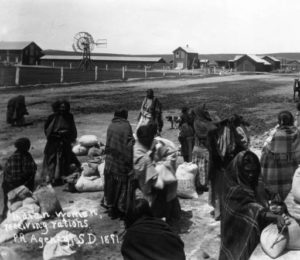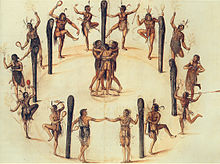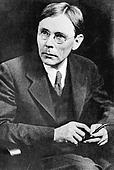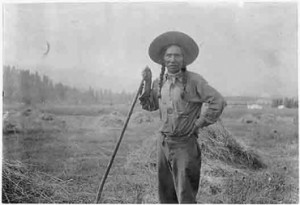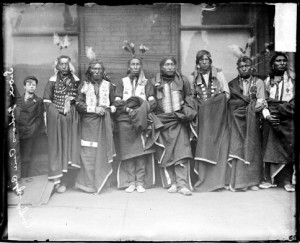The United States government always knew that native peoples were important–whether as friends or foes. Early federal practice was to interact with tribes as the country would with other independent nations, but this soon proved cumbersome and restrictive for the domestic policy U.S. leaders wanted to pursue. The Bureau of Indian Affairs (known more generally as the Indian Office or Office of Indian Affairs) shifted its role from negotiating with Indian nations to simply enforcing its will on them.
In 1849, Congress transferred the BIA from the War Department to the Department of the Interior and began to greatly increase its intrusiveness into native affairs. Tribes which had been removed to reservations and forced to farm arid, nonproductive land, soon faced extreme poverty. The BIA distributed food and supervised many services on reservations, but unscrupulous agents took advantage of the people they were supposed to help. Many accusations of fraud and abuse hit the agency, which never suffered a loss of power even after investigations proved many accusations to be well-founded.

Tulalip Indian School Learning Modern Farming Methods, 1912, photo by Ferdinand Brady, courtesy californiaindianeducation.org
Eventually the BIA became responsible for Indian schools, the issues involved in allotting land, all the contracts associated with providing supplies and service to Indians, and even with providing justice. Tribal governments were weakened and shunted aside, giving the BIA and particularly its Indian agents dramatic power on reservations. Needless to say, there were agents who did not hesitate to use their power for selfish ends, rather than for protecting people who had been stripped of their own power and rights.











